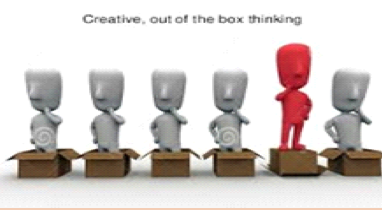










































The following case study was written up by Riad, 'Ray' Ardahji, one of 100+ incredible speakers taking part in the Business `Transformation & Operational Excellence World Summit. To learn more about Ray's role, please visit btoes.com.
Company X background
Company X is a 1,700,000 SF facility with approximately 900 employees, located in Northern Indiana. Company X’s primary business is a metal fabrication with over $150M in annual sales. It operates over 3 shifts. Its main products include store fixtures, merchandising and storage systems, displayers and accessories in metal, wire, tubing, melamine, plastic and laminates. Its manufacturing processes include: metal forming, punching, roll forming, resistance welding, mig welding and powder coating. The average life of a typical asset is 20 years old. Based on initial lean assessment and the VSM (current state) of one the main product families, it was evident that change was needed in OEE (67%), scrap and changeover times. The maintenance activities were largely reactive (Smokey the Bear) with few PMs in between. A CI team was tasked to develop an improvement plan, and it was clear that equipment care needed some immediate attention. In conclusion, it was determined that TPM is needed to improve current conditions.

What’s TPM (Yogi the Bear)?
TPM stands for “Total Productive Maintenance” and builds a close relationship between Maintenance and Production, showing how good care and the up-keep of equipment results in higher productivity.
TPM is a philosophy of continuous improvement that creates a sense of ownership in the operator(s) of each machine as well as in their supervisor. We all reach a new attitude of higher responsibility and commitment. TPM is to Maintenance very much as Total Quality is to Production. TPM is another tool to help us achieve our OEE performance targets.
Furthermore, TPM is the most challenging module of lean manufacturing implementation and is a pre-condition for the three elements of Lean manufacturing based on a continuous flow: Takt time, standard work & pull system. Most companies disregard the importance of machine reliability, thus assuming it is sufficient, which can lead to big trouble ahead.
Willis Harmon's An Incomplete Guide to the Future says a paradigm is the basic way of perceiving, thinking, valuing, and doing.
TPM requires a paradigm shift: It is a change to a new game or rather a game changer, a new set of rules. But what causes a paradigm to shift? Simply, there has to be a better way. If you keep doing what you have been doing, you will keep getting what you have been getting. The team must realize the power of paradigms to successfully adopt the new paradigm of TPM.
|
A true paradigm shift! |
Smokey the Bear (Old) |
Yogi the Bear (New) |
|
I operate, you fix |
We are all responsible for our equipment |
|
|
I fix, you design |
||
|
I design, you operate |
One of the most important paradigm shifts of the Twentieth Century is, “Without caring there can be no quality,” Made in Japan in 1962 vs. Made in Japan in 1990. Why? This transformed from capacity-driven to customer-driven. It was a Total Quality Paradigm Shift.
When a paradigm shifts, everyone goes back to zero. According to Joel Barker, “What is impossible to do, but if it could be done, would fundamentally change your business?” Apple's entrance changed the Microsoft paradigm. But that is the Microsoft paradigm—adapt to the new and do it better. Do the impossible. Impossible is a boundary word. Spot the changes early and you will be part of the paradigm shift.
Darrell Calkins once said “…one lives and analyzes data within a frame, unaware that the solution is most often just outside of that frame. Never underestimate the depth of your subjectivity.”
TPM is not a specific maintenance policy. It, it is a culture and a new attitude towards maintenance. TPM is a 3-letter word, the meaning being:
TPM consists of 5 major blocks:

The main purpose of TPM is the complete elimination of the following 7 major machine losses:
|
Breakdowns or Failures |
Losses due to sporadic breakdowns or equipment failures |
|
Setups and Adjustments |
Shutdown losses accompanying setup changeovers and adjustments |
|
Tooling Losses |
Losses due to problems with tools or tool design, and adjustments required |
|
Idling and Minor Stoppages |
Losses due to idling or stoppage resulting from transient problems |
|
Machine Speed Reductions |
Losses arising from disparities between actual operating speeds and speeds specified in equipment design |
|
Quality Defects and Rework |
Losses due to defects and rework |
|
Startup & Reduced Yield |
Losses incurred in the interval between production startup and stable production |
A very important aspect of AC is the establishment of TPM for each asset. The purpose of TPM is to teach operators how to maintain their equipment by performing the following 7 steps:
The 7 Steps of TPM
|
Step # |
Early prevention and detection |
Outputs/ Results |
|
1.- Initial cleaning |
|
Skill Development: Detect abnormalities and opportunities and make improvements and solve the abnormal conditions. |
|
2.- Eliminate sources of contamination and inaccessible areas |
||
|
3.- Creation of a checklist for cleaning and lubrication standards |
Cross functional team determines what they have to do. |
|
|
4.- General inspection |
Understanding operation principles of machine and its systems. |
Cross training & development: More skilled operators and maintenance techs. teach the least experienced. |
|
5.- Autonomous Inspection |
Understanding of the link between equipment conditions and product quality. |
Measure: Data organization to describe optimal conditions and how to maintain them. |
|
6.- Organization and housekeeping |
5S |
KPI / Regular audits and sustain |
|
7.- Full Implementation |
Machine is back to original condition or close enough! |
Continuously Improve! |
Results
Company X has implemented a standardized plant-wide TPM lubrication program, and has fully trained 56-employees in TPM, of which 27-employees have actively participated in six different 40-hour Autonomous Maintenance (AM) since November 2007. Two people have participated in all six AMs. These AMs included 3-automated roll form lines, 1-automated press line, and 2-automated MIG welding cells. These were older, well-worn work centers.
Yes, for the accounting majors reading this, we’ve invested 1,480 man-hours in AM activities, and to some extent that has taken a “leap of faith” that the benefits would justify the investment.
From our preliminary results, we believe that the equipment OEE (Overall Equipment Effectiveness, ratios for the subject AM (Autonomous Maintenance) machine centers have increased to 77% on average. Putting that in perspective, these 6-machine centers employ approximately 7-people on each of 2-shifts. A 10% increase in OEE will yield an annual throughput increase potential of approximately 2,800 man-hours.
By the standardization of the TPM procedures that resulted from the AM activities, we fully expect to maintain the improvements in OEE. All job descriptions were updated to include TPM as standard work.
Finally, this initiative was shared with other plants within the division and presented at a key reliability conference in 2013. Company X was awarded a CEO CI Excellence Award in 2010.
View our schedule of industry leading free to attend virtual conferences. Each a premier gathering of industry thought leaders and experts sharing key solutions to current challenges.
View Schedule of Events-------------------------------------------------------
Search for anything
Insights from the most progressive thought leaders delivered to your inbox.
Insights from the world's foremost thought leaders delivered to your inbox.
Being a hero is all about creating value for others. Please invite up to 5 people in your network to attend this premier virtual conference, and they will receive an invitation to attend.
If it’s easier for you, please enter your email address below, and click the button, and we will send you the invitation email that you can forward to relevant people in your network.
View our schedule of industry leading free to attend virtual conferences. Each a premier gathering of industry thought leaders and experts sharing key solutions to current challenges.
View Schedule of EventsWatch On-Demand Recording - Access all sessions from progressive thought leaders free of charge from our industry leading virtual conferences.
Watch On-Demand Recordings For FreeDelivered by the industry's most progressive thought leaders from the world's top brands. Start learning today!
View All Courses NowThe premier Business Transformation & Operational Excellence Conference. Watch sessions on-demand for free. Use code: BFH1120
Watch On-DemandInsights from the most progressive thought leaders delivered to your inbox.
Insights from the world's foremost thought leaders delivered to your inbox.
Being a hero is all about creating value for others. Please invite up to 5 people in your network to also access our newsletter. They will receive an invitation and an option to subscribe.
If it’s easier for you, please enter your email address below, and click the button, and we will send you the invitation email that you can forward to relevant people in your network.
Courtesy of Nintex Pty's Paul Hsu, below is a transcript of his speaking session on 'Improve employee productivity during and post-COVID by ...
Read this article about HP, Best Achievement in Operational Excellence to deliver Digital Transformation, selected by the independent judging panel, ...
Read this article about BMO Financial Group, one of our finalists, in the category Best Achievement in Operational Excellence to deliver Digital ...
Read this article about Cisco, one of our finalists, in the category Best Achievement of Operational Excellence in Internet, Education, Media & ...









































































































































































































